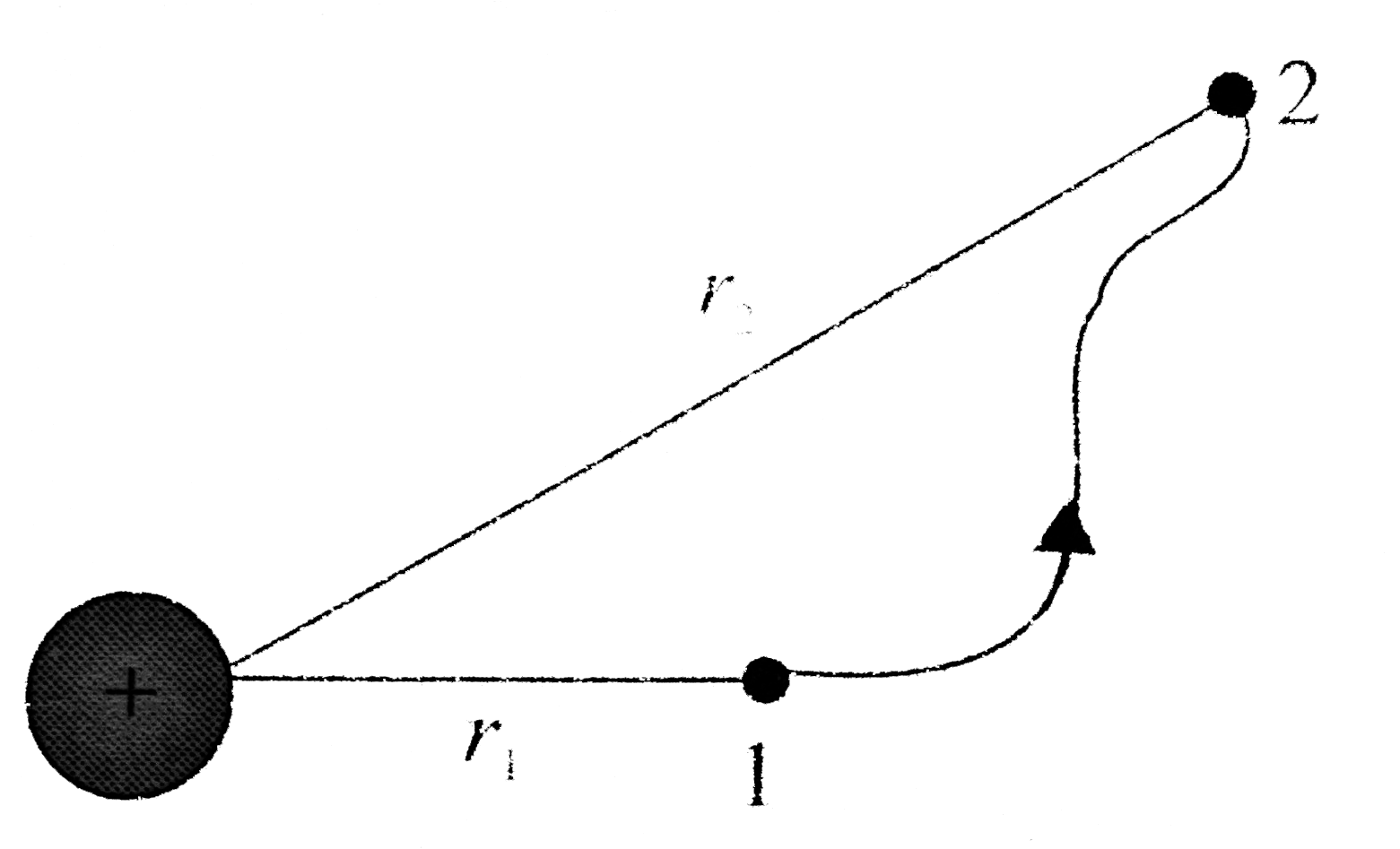A charge 2μC is taken from inifinity point in an electric field, without changing its velocity. If work done against eletrostatic forces is −40μJ, then find the potential at that point.
To solve the problem step by step, we need to find the electric potential at a point in an electric field where a charge of 2 µC is brought from infinity, and the work done against electrostatic forces is -40 µJ.
1. Understand the Given Information:
- Charge, Q=2μC=2×10−6C
- Work done against electrostatic forces, W=−40μJ=−40×10−6J
2. Recall the Formula for Work Done:
The work done W in moving a charge Q from a point at infinity (where potential V∞=0) to a point P in an electric field is given by:
W=Q×(VP−V∞)
Since V∞=0, this simplifies to:
W=Q×VP
3. Substitute the Known Values:
Plugging in the values we have:
−40×10−6=(2×10−6)×VP
4. Solve for VP:
Rearranging the equation to solve for VP:
VP=−40×10−62×10−6
Simplifying this gives:
VP=−402=−20V
5. Conclusion:
The electric potential at point P in the electric field is:
VP=−20V
Final Answer:
The potential at that point is −20V.
---
- Charge, Q=2μC=2×10−6C
- Work done against electrostatic forces, W=−40μJ=−40×10−6J
The work done W in moving a charge Q from a point at infinity (where potential V∞=0) to a point P in an electric field is given by:
W=Q×(VP−V∞)
Since V∞=0, this simplifies to:
W=Q×VP
Plugging in the values we have:
−40×10−6=(2×10−6)×VP
Rearranging the equation to solve for VP:
VP=−40×10−62×10−6
Simplifying this gives:
VP=−402=−20V
The electric potential at point P in the electric field is:
VP=−20V
The potential at that point is −20V.
Topper's Solved these Questions
- BOOK - CENGAGE PHYSICS ENGLISHCHAPTER - ELECTRIC POTENTIALEXERCISE - Exercise 3.29videos
ELECTRIC POTENTIAL
- BOOK - CENGAGE PHYSICS ENGLISHCHAPTER - ELECTRIC POTENTIALEXERCISE - Exercise 3.39videos
ELECTRIC POTENTIAL
- BOOK - CENGAGE PHYSICS ENGLISHCHAPTER - ELECTRIC POTENTIALEXERCISE - Examples9videos
ELECTRIC POTENTIAL
- BOOK - CENGAGE PHYSICS ENGLISHCHAPTER - ELECTRIC FLUX AND GAUSS LAWEXERCISE - MCQ s38videos
ELECTRIC FLUX AND GAUSS LAW
- BOOK - CENGAGE PHYSICS ENGLISHCHAPTER - ELECTRICAL MEASURING INSTRUMENTSEXERCISE - M.C.Q2videos
ELECTRICAL MEASURING INSTRUMENTS
Similar Questions
When charge 10μC is shifted from inifinity to a point in an electric field, it is found that work done by eletrotatic forces is 10μJ. If the charge is doubled and taken again from inifinity to the same point without accelerating it, then find the amount of work done by electric field and against electric field.
View SolutionA point charge 20μC is shifted from infinity to a point P in an electric field with zero acceleration. If the potential of that point is 1000 volt, then
(i) Find out work done by electric field ?
(iii) If the kinetic energy of charge particle is found to increase by 10 mJ when it is brought from infinity to point P, then what is the total work done by external agent ?
(iv) What is the work done by electric field in the part (iii)
(v) If a point charge 30μC is released at rest at point P, then find out its kinetic energy at a large distance ?View SolutionA point charge is taken from a point A to a pint B in an electric field. Does the work done by the electric field depend on the path of the charge ?
View SolutionAs charge q=1μC is placed at point (1m,2m,4m). Find the electric field at point P(0,−4m,3m)
View SolutionWhen a 2μC charge is carried from point A to point B, the amount of work done by the electric field is 50μJ. What is the potential difference and which point is at a higher potential ?
View Solution1μC charge is shifted from A to B, and it is found that work done by an external force is 40μJ. In doing so against electrostatic forces, find potential difference VA−VB.
View SolutionA charge particle q is shifted from point 1 to point 2 in the electric field of a straight long linear charge of λ.
i. Find the electric work done if r1=R and r2=2R
ii. Find the potential difference between 1 and 2.
 .View Solution
.View SolutionA charge of 10C is moved in an electric field of a fixed charge distribution from point A to another point B slowly. The work done by external agent in doing so is 100J. What is the potential difference VA−VB?
View Solution1μC charge is shifted from A to B and it is found that work done by external force is 80μJ against electrostic forces, find VA−VB
View SolutionA charge is moved in an electric field of a fixed charge distribution from point A to another point B slowly. The work done by external agent in doing so is 100J . What is the change in potential energy of the charge as it moves from A to B ? What is the work done by the electric field of the charge distribution as the charge moves from A to B ?
View Solution

